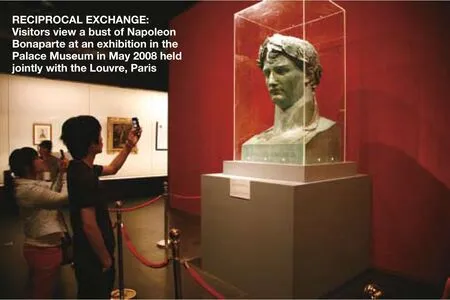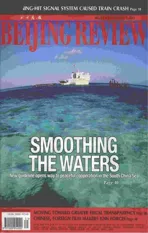A Short Stay in Paris
2011-10-14ByYULINTAO
By YU LINTAO
A Short Stay in Paris
By YU LINTAO
Treasures from China’s Palace Museum will be displayed at the Louvre in France

CFP
For the first time in its history, part of the royal antiquity collection at the Palace Museum in China will journey abroad. It will be displayed at the Louvre Museum in Paris from September 26, 2011 to January 9, 2012. This is no doubt good news for European enthusiasts of Chinese culture.
The 154-piece collection to be exhibited in the Louvre is to showcase life in the royal palace during China’s Ming and Qing dynasties (1368-1911). It is divided into four sections according to their uses involving administrative affairs, royal family daily life, artistic relics and a scale model of the Forbidden City.
Relics related to administrative affairs include one of the emperor’s thrones and costumes worn by the honor guard in a life-size replica setting of the royal court, a portrait of the emperor in court attire, the emperor’s helmet and armor, an imperial jade seal, and scroll paintings on royal activities revealing a panorama of Chinese palace affairs and royal rituals from the Ming and Qing dynasties.
The artistic relics section has a selection of artwork from several emperors and empresses as well as court painters. The highlight of this section is a painting by Yao Wenhan, a court painter in the Qing Dynasty (1644-1911), which depicts Emperor Qianlong (1711-99) admiring treasures. The actual treasures depicted in the paintings will be displayed together with the paintings themselves, adding authenticity and splendor to the exhibit.
In the section dedicated to the royal family’s daily life, stationery tools, eating utensils, an assortment of casual wear of royal family members, paintings depicting royal members’ recreational activities and more will be displayed. These items will help viewers learn about the royal family’s lifestyle, expanding upon each emperor’s out-of-court interest.
The scale model of the Forbidden City is a 1-to-350 of the real former royal palace. It will enable visitors to see the immensity of the imperial palace as a scaled down version.
China’s national treasures don’t often leave their home in the Palace Museum. But during President Hu Jintao’s visit to France in November 2010, Li Ji, Deputy Curator of the Palace Museum, and Henri Loyrette, Curator of the Louvre Museum reached an agreement allowing China’s relics to take up temporary residence in the famous French museum. The contract allows the Chinese antiquities to be displayed in the Louvre, one of the dominant cultural centers of Western civilization, besides other oriental culture museums in France such as Musée Guimet.
“This is the frst time the Chinese cultural relics will be displayed in the Louvre. It is a historic breakthrough, the frst large-scale and high-level show involving the celebration of Chinese civilization in France,” said Li.
The Palace Museum and the Louvre share similar histories. Both used to be imperial palaces and later became museums after each country’s respective feudal rulers were overthrown. Now the two museums are the most visited in the world in the number of visitors annually, Li said.
According to the agreement, the two sides will cooperate comprehensively in exhibitions, cultural relic protection and mutual exchanges in the next fve years. The two sides will also discuss and share their experiences in protecting cultural relics and meeting the demand of visitors as the numbers continue to increase each year.
The Palace Museum
Located in the center of Beijing, the Palace Museum was established on the base of the Forbidden City, a royal palace of the Ming and Qing dynasties (1368-1911), to preserve and display its collection of treasures. Founded in 1925, the museum is the largest museum of the country.
The museum houses a collection of more than 1.8 million valuable art works, most of which were in the possession of the imperial families of the Ming and Qing dynasties. These art treasures include painting, pottery; bronze, gold and silverware; embroidery, sculpture, jade, lacquer and enamel wares. In addition, there are also court articles, including jewels, accessories, clocks, medicines, furniture and furnishings. It is a unique, superb building complex, integrating outstanding achievements of ancient Chinese architecture.
In 1961, the Forbidden City was included in the List of Key historical Monuments under State Protection. In 1987, it was put on the World heritage List of the UNESCO. The Palace Museum used to be as mysterious as the palace itself. But now, with advanced technology and equipment it has built a “digital palace” on the Internet, to unveil its tremendous cultural resources.
(Source:dpm.org.cn)
